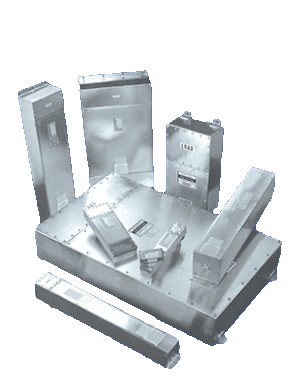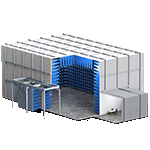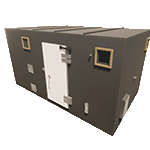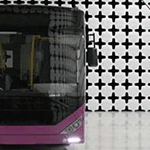What is a SCIF?
(Secure Compartmented Information Facility) and other frequently asked SCIF questions.
What is a SCIF?
A Sensitive Compartmented Information Facility or SCIF is a room or building specially built with highly technical countermeasures designed to prevent eavesdropping.
They are used to process sensitive compartmented information (SCI) - often various types of classified information.
Built to specific acoustic specifications, they are typically designed without windows and have a litany of other measures built around the control of access and use of electronics.
SCIFs can also be shielded with a metallic radiant barrier to prevent radio frequencies from radiating from within.


How can APC Technology Group help you meet your SCIF requirements?
APC designs and installs bespoke SCIF rooms that fit exact customer specifications. Our experienced in-house team work alongside our technology partners to overcome some of the most demanding industrial, medical and government shielding challenges. Our SCIF solutions are ideal for the demanding requirements of mission-critical aerospace and defence applications.


SCIF Requirements
The requirements for a SCIF are dependent on the end user. Most require acoustic soundproofing to prevent conversations from being overheard outside of the room. This can be achieved with the use of white noise being played to mask conversations, in addition to traditional methods of soundproofing and acoustic absorption.
From an electronics perspective, all SCIFs have metallic barriers similar to that of a Faraday Cage. The purpose of this is to block all RF signals and RF emissions. Because of this, they are often accompanied by power filters for getting data or power into the room.
APC can also offer a full range of compliant furnishings, fittings and equipment to maximise the productivity of a SCIF and meet the customer's exact requirements.
What Makes a Good SCIF?
Our technical experts address the reliability and robustness of a SCIF across eight key parameters:
- Physical security - A good SCIF will have a reinforced construction, secure entry points and suitable soundproofing
- Access control - Verified credentials, visitor logs and limited access all contribute to a secure SCIF
- Electronic security - TEMPEST shielding to protect against electronic eavesdropping, secure communication lines and a Faraday cage structure will aid good electronic security.
- Monitoring and surveillance - Continuous monitoring with suitable alarm systems and intrusion detection are key to a secure SCIF
- Document and data security - Safe storage of physical and electronic documents, including encryption and secure controlled destruction techniques
- Operational security (OPSEC) - Addressing the workstation environment to ensure it is secure, adheres to internal policies and offers good compartmentalization so tasks can be carried out with appropriate levels of access
- Environmental controls - we take heating, ventilation and fire protection controls into account to address health and safety in addition to security
- Emergency procedures - A good SCIF will have well-defined emergency procedures for evacuation which do not compromise security whilst also taking in to account things like a backup power system to ensure continued operation
What Portable Electronic Devices (PED's) are Permitted in a SCIF?
PEDs (Portable Electronic Devices) can pose a security risk in sensitive areas for several reasons:
- Data leakage: PEDs can be used to access, store, and transmit sensitive information. Unsecured Wi-Fi connections, Bluetooth, or data transfer via USB ports can all be exploited to steal classified data or compromise security protocols.
- Malicious software: PEDs can be knowingly, or unknowingly infected with malware that can compromise entire systems. Malware on a personal device used in a sensitive area could potentially spread to other connected devices, exposing sensitive information or disrupting critical operations.
- Electronic eavesdropping: PEDs with built-in microphones or cameras could be used for unauthorised surveillance. This could be a major security breach if sensitive conversations or activities are taking place in the area.
- Signal disruption: In some SCIFs with specialised shielding, certain types of PEDs might interfere with critical communication or equipment. These disruptions can affect operational efficiency or even compromise security measures.
- Physical security concerns: Lost or stolen PEDs containing sensitive information also pose a major security breach. Some PEDs, like laptops, might pose physical security risks due to the potential for theft or unauthorised access to the device itself.
Overall, PEDs pose a risk in sensitive areas due to the potential for data breaches, unauthorised access, signal disruption, and physical security concerns. To mitigate these risks, many sensitive areas have strict policies regarding the use of PEDs. These policies may include limitations on specific types of devices, mandatory security protocols, and designated secure zones for authorised device use.
Can a Sensitive Compartmented Information Facility (SCIF) have windows?
In general, SCIFs are designed to be secure environments that are isolated from the rest of a facility or building in which they are located. They are usually constructed with reinforced walls, floors, and ceilings to protect against unauthorised access and eavesdropping. As a result, SCIFs often do not have windows, as windows can compromise the overall security of the facility.
However, it is possible for a SCIF to have windows, provided that they are designed and installed in a way that does not compromise the secure integirty of the facility. For example, the windows may be made of a material that is difficult to see through, or they may be coated with a film that blocks electronic signals. In some cases, the windows may be placed in locations that are not visible from the outside, or they may be installed in such a way that they cannot be easily opened or breached.
Ultimately, the decision to include windows in a SCIF will depend on the specific security needs and requirements of the facility. It is important to carefully consider all potential vulnerabilities and to take appropriate measures to protect the security of the SCIF and the sensitive information it contains.
What is TEMPEST?
Telecommunications Electronics Material Protected from Emanating Spurious Transmissions (TEMPEST) is a set of standards set by the U.S. National Security Agency and NATO.
TEMPEST is a specific set of standards detailing spying on information systems from leaking emanations, including unintentional radio or electrical signals, sound, and vibrations. Within a secure compartmented information facility, this typically refers to TEMPEST power filters NATO SDIP-27 Level A (formerly AMSG 720B).




What are HEMP Filters?
High Altitude Electromagnetic Pulse (HEMP) filters are designed to protect electronic devices from electromagnetic interference (EMI) or during hazardous transient conditions. HEMP filters are employed to absorb a potentially destructive overshoot voltage and will also help meet the requirements of MIL-STD-188-125.
EMI can also result from poor power sources, a utility company fault, wiring erors or an Electromagnetic Pulse (EMP).
Ask a Member of our Expert Team
Have more questions regarding SCIFs - or need advice and support for planning your own Secure Compartmented Information Facility? Our team are on hand to answer your questions and share the technical insight we have to ensure you meet your project requirements
Request a callback from a member of our technical team to get dedicated one-to-one consultancy for your SCIF requirements.
0330 313 3220
[email protected]
EMC Chambers and Shielded Enclosures for Defence Applications by APC
APC Technology Group also provide bespoke EMC and RF Shielded Container solutions to meet the testing and development requirements of a variety of industries and applications.




